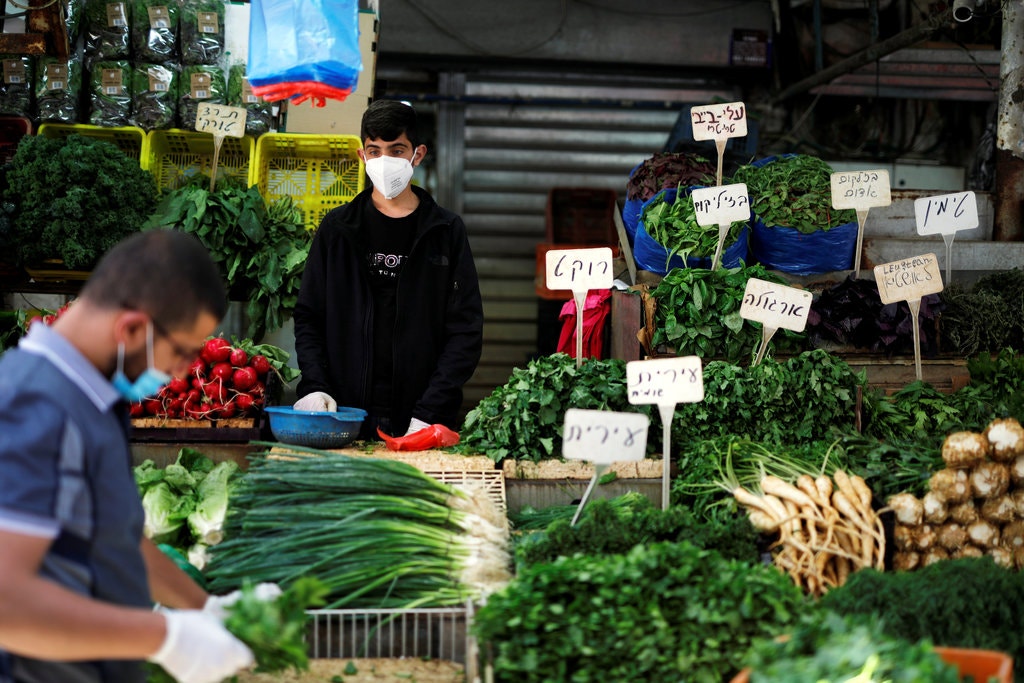
If we cannot resume economic activity without causing a resurgence of Covid-19 infections, we face a grim, unpredictable future of opening and closing schools and businesses.
We can find a way out of this dilemma by exploiting a key property of the virus: its latent period — the three-day delay on average between the time a person is infected and the time he or she can infect others.
People can work in two-week cycles, on the job for four days then, by the time they might become infectious, 10 days at home in lockdown. The strategy works even better when the population is split into two groups of households working alternating weeks.
Austrian school officials will adopt a simple version — with two groups of students attending school for five days every two weeks — starting May 18.
Models we created at the Weizmann Institute in Israel predict that this two-week cycle can reduce the virus’s reproduction number — the average number of people infected by each infected person — below one. So a 10-4 cycle could suppress the epidemic while allowing sustainable economic activity.
Even if someone is infected, and without symptoms, he or she would be in contact with people outside their household for only four days every two weeks, not 10 days, as with a normal schedule. This strategy packs another punch: It reduces the density of people at work and school, thus curtailing the transmission of the virus.
Schools could have students attend for four consecutive days every two weeks, in two alternating groups, and use distance-learning methods on the other school days. Children would go to school on the same days as their parents go to work.
Businesses would work almost continuously, alternating between two groups of workers, for regular and predictable production. This would increase consumer confidence, shoring up supply and demand simultaneously.
During lockdown days, this approach requires adherence only to the level of distancing already being demonstrated in European countries and New York City. It prevents the economic and psychological costs of opening the economy and then having to reinstate complete lockdown when cases inevitably resurge. Giving hope and then taking it away can cause despair and resistance.
A 10-4 routine provides at least part-time employment for millions who have been fired or sent on leave without pay. These jobs prevent the devastating, and often long-lasting, mental and physical impacts of unemployment. For those living on cash, there would be four days to make a living, reducing the economic necessity to disregard lockdown altogether. Business bankruptcies would also be reduced, speeding up eventual economic recovery.
The cyclic strategy is easy to explain and to enforce. It is equitable in terms of who gets to go back to work. It applies at any scale: a school, a firm, a town, a state. A region that uses the cyclic strategy is protected: Infections coming from the outside cannot spread widely if the reproduction number is less than one. It is also compatible with all other countermeasures being developed.
Workers can, and should still, use masks and distancing while at work. This proposal is not predicated, however, on large-scale testing, which is not yet available everywhere in the United States and may never be available in large parts of the world. It can be started as soon as a steady decline of cases indicates that lockdown has been effective.
The cyclic strategy should be part of a comprehensive exit strategy, including self-quarantine by those with symptoms, contact tracing and isolation, and protection of risk groups. The cyclic strategy can be tested in limited regions for specific trial periods, even a month. If infections rates grow, it can be adjusted to fewer work days. Conversely, if things are going well, additional work days can be added. In certain scenarios, only four or five lockdown days in each two-week cycle could still prevent resurgence.
The coronavirus epidemic is a formidable foe, but it is not unbeatable. By scheduling our activities intelligently, in a way that accounts for the virus’s intrinsic dynamics, we can defeat it more rapidly, and accelerate a full return to work, school and other activities.
